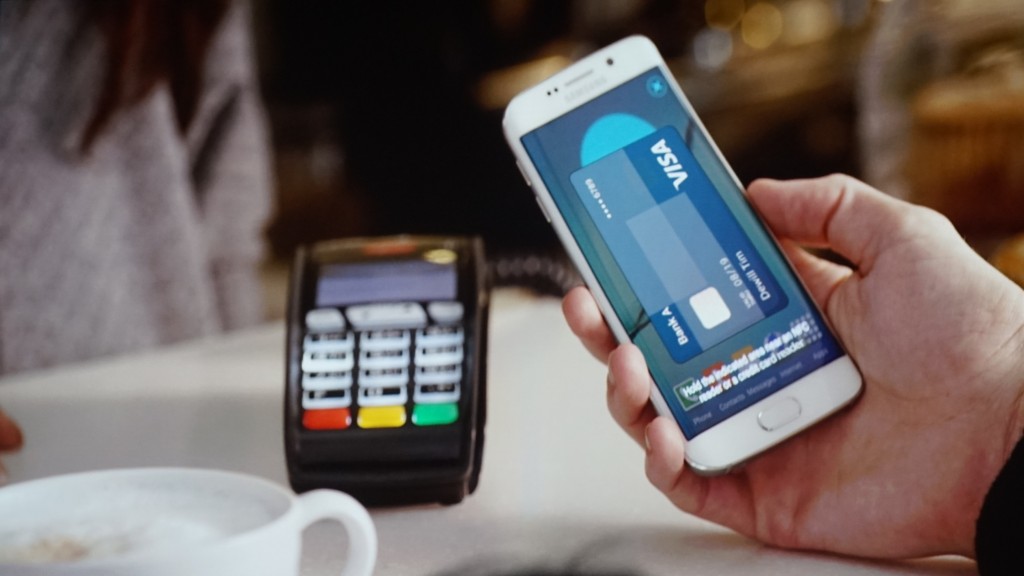Samsung wants to start a mobile payment system so that it can replace the plastic cards in your wallet.
Samsung Pay works in almost all stores including those that use older magnetic-stripe point-of-sale terminals without merchants needing to opt into any program or update hardware.
Where is Samsung Pay available?
Samsung Pay currently available in the US, UK, Australia, Belarus, Brazil, Canada, China, Hong Kong, India, Italy, Hong Kong, Malaysia, Mexico, Puerto Rico, Russia, Singapore, South Korea, Spain, Sweden, Switzerland, Taiwan, Thailand, United Arab Emirates and Vietnam.
Which phone, bank, card and carrier you need?
Samsung Pay available in the Galaxy S9, S9 Plus, Note 8, Galaxy S8, S8 Plus, S7, S7 Edge, S6 Edge Plus, S6, S6 Edge, S6 Active and Galaxy Note 5.
It’s also available on smartwatches like Gear S2 (only for transactions on NFC terminals), Gear S3, Gear Fit 2 and Gear Sport.
All major carriers in the US support Samsung Pay: AT&T, Cricket, MetroPCS, Sprint, T-Mobile, Verizon and US Cellular.
You just need a Visa, MasterCard, Discover or American Express card. See the full list of supported banks and cards mentioned below.
Where can I use Samsung Pay?
Samsung said that its system will work with almost all point-of-sale systems: NFC, magnetic stripe and EMV (Europay, MasterCard and Visa) terminals for chip-based cards.
It won’t work with readers where you need to physically insert your card into a slot, however, such as those found at gas stations and on ATMs.
How does Samsung Pay work?
Samsung Pay uses near-field communication (NFC) technology to process payments at tap-to-pay terminals.
Samsung Pay also works with almost all other magnetic stripe terminals as well. These older systems are widely deployed throughout retailers in the US. Samsung Pay uses what it calls magnetic secure transmission (MST) when the phone is held against one of these registers. The phone emits a magnetic signal that simulates the magnetic strip found on the back of a credit or debit card.
Source: Android Authority
How do I make a payment with Samsung Pay?
- From the lock screen, swipe up from the small Samsung Pay bar.
- Select the card you want to pay with
- then place your finger on the fingerprint scanner to verify your fingerprint, use the iris scan or PIN.
- Hold the back of the phone against the payment terminal.
Is Samsung Pay secure?
Samsung Pay does not store the account or credit card numbers of cards on the device, instead of using tokenization for transactions. Each time a purchase is made, the Samsung Pay handset sends two pieces of data to the payment terminal. The first is a 16-digit token that represents the credit or debit card number, while the second piece is a one-time code or cryptogram generated by the phone’s encryption key.
What if I lose my phone?
Payments can’t be made on your phone without being authorized via fingerprint, PIN or iris scan. If you register with Samsung’s Find My Mobile service you can remotely erase information on the phone, including any cards stored in Samsung Pay.
Can I use Samsung Pay even without a Wi-Fi or cellular connection?
Yes, But you will only be able to make 10 payments without the device being on Wi-Fi or cellular data. You will also need an active internet connection to add a card and to access transaction history.
Can I use Samsung Pay overseas?
For US customers, if you can use your card overseas then it’s likely it will also work with Samsung Pay when you travel. The caveat is that if you try to add a card while you are traveling outside the US, you may have to contact your bank.
Does Samsung Pay also work for returns?
Yes. Merchants may require you to hold the phone against the payment terminal in the same way as when you make a payment to process the return. Also, you will be asked to match the payment information on the receipt with the last four digits of your virtual card number. This is accessed through the Samsung Pay app.
Source: CNET


